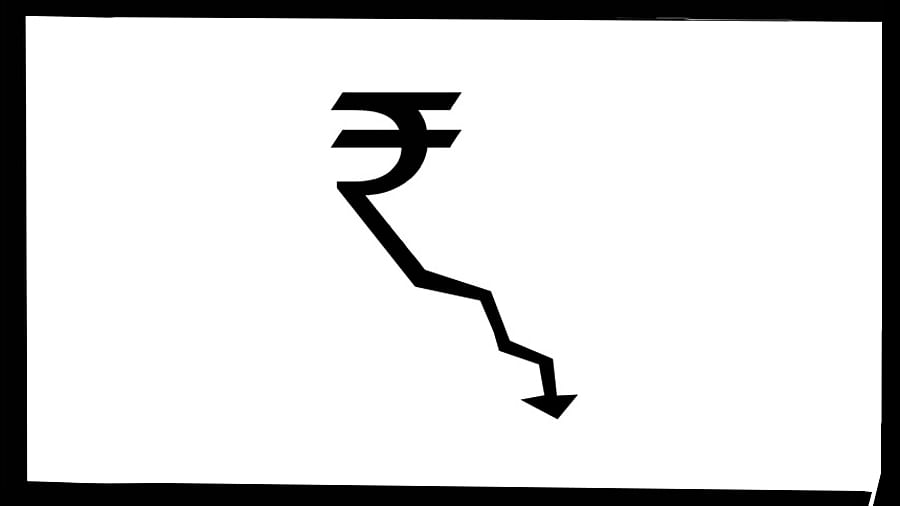
Recent data suggests a worrying macroeconomic reality for India’s already fragile financial sector, which is weighed down by non-performing assets (NPAs), debt, and insolvency issues: deposit growth is lagging behind credit growth rate. In June, bank deposits grew at less than 11%, while bank loans rose by around 14%. By August 9, bank deposits had shown a yearly growth of 11.7%, whereas bank loans had grown 18.4%.
In short, the demand for credit is significantly outpacing deposit growth in banks.
In such a situation, banks, especially public sector banks, may face liquidity issues and challenges in meeting withdrawal demands due to the insufficient deposits. Furthermore, rapid loan growth increases the risk of defaults, which could escalate NPAs and strain the banking sector’s stability.
While banks do not typically rely on deposits alone to provide loans—the mechanics of credit creation work differently from textbook definitions—a strong deposit base provides a cushion to banks, particularly during times of financial uncertainty and economic volatility. The loan creation process is also constrained by a bank’s financial capital.
As has been pointed out, “lending is limited by the confidence that a bank needs to have while giving out a loan, that the loan is more than likely to
be repaid.” Or, to put it slightly technically, “there are only so many prime borrowers available.”
This author has earlier argued that the Indian economy, when viewed from the circular flow system of different stakeholders: household level to firm and government levels, is facing a substantial ‘hidden’ debt crisis, worsened by macro-Keynesian aggregates that haven’t performed well (from savings, investment, employment, new capacity, or productivity creation).
Debt that may be less visible in macrotrends but is actually ballooning over time, as private investment remains low and real incomes and employment growth (across sectors) stagnate or operate at a suboptimal level.
The widening gap between deposit and credit growth rates is a significant marker of this debt-like bubble forming as a ‘crisis envelope’ on India’s macroeconomic status quo.
While India’s macro position may seem relatively better compared to other emerging economies, beneath the shiny armour, the engines driving the economy appear vulnerable.
The finance minister, Nirmala Sitharaman, recently called on banks to step up their deposit mobilisation efforts and undertake special drives to address the issue. This is poor thinking, which fails to acknowledge the underlying fundamentals of banking behaviour, particularly the pivot towards finalisation of credit (which banks have adopted), accompanied by the indifferent approach towards the problem associated with other intersectional aggregates (including lower saving rates and lower disposable incomes) that is contributing to lower deposit rates.
Additionally, Soumyakanti Ghosh, Group Chief Economic Adviser of the State Bank of India, pointed to a slowdown in deposit growth due to money leakages from the financial system, “including the way the union government now disburses money under the centrally sponsored schemes that have a matching share by the state government, in a just-in-time manner.”
As the Mumbai-based economic commentator Vivek Kaul argues (and I agree with him here): “I haven’t been able to get my head around this argument completely, because this money, even though delayed, does ultimately reach the banking system.” Kaul also explains how the Reserve Bank of India creating money to support the government’s borrowing needs (for capital expenditure and other spending priorities) is creating additional money in the financial system, which usually drives deposits too, but in this case, that additional money is not adding to any bank deposit growth.
It’s simply more money in the system that hasn’t gone in to create demand but meet supply-side needs (since the printed/borrowed money actually spent isn’t creating real demand for households or being processed as ‘cash sent to beneficiaries for use’).
So, while deposit growth is linked to systemic lending growth (not the other way around), including loans and investments in bonds, the investment book is lagging, even as loans grow 15-16% year-on-year. This results in overall asset and deposit growth hovering around 10-11%.
The high Loan-to-Deposit Ratio (LDR) reflects sectoral or micro-imbalances rather than macro-imbalances. Large corporates are borrowing less, while households, Micro, Small and Medium Enterprises (MSMEs), and the agricultural sector are borrowing more , but generating weak demand.
Furthermore, from a macro-economic perspective, firms, facing compressed demand and slowing consumption expenditure, are sitting on credit and cash rather than investing in building ‘new capacity’ or inventories — a point this author has repeatedly emphasised.
Since credit, despite high demand, is not being used to invest in productivity-enhancing activities, but rather to finance borrowings or existing debt (from households to firms to government), this will likely create additional troubles for India’s macroeconomic position in the near future.
Credit cycles will also become weaker over time (as there is only a certain amount of space up to which the RBI will borrow and finance in the absence of sufficient savings and investments coming in), and that will subsequently affect overall growth too (which is already at a break event point if not at a precariously low position).
There is a strong need for an intersectional study and understanding the deposit-credit growth gap problem in relation to other macroeconomic vulnerabilities, which need the underlying market conditions and design to be structurally altered — not merely tinkered with.
The government’s inactions (its inability to understand the structural tenets of the current crisis and its economic and financial implications) may be ignored at the cost of the nation’s financial health and economic robustness, driving it down to its own peril ultimately.
(The writer is professor and dean, and director, Centre for New Economics Studies, O P Jindal Global University)